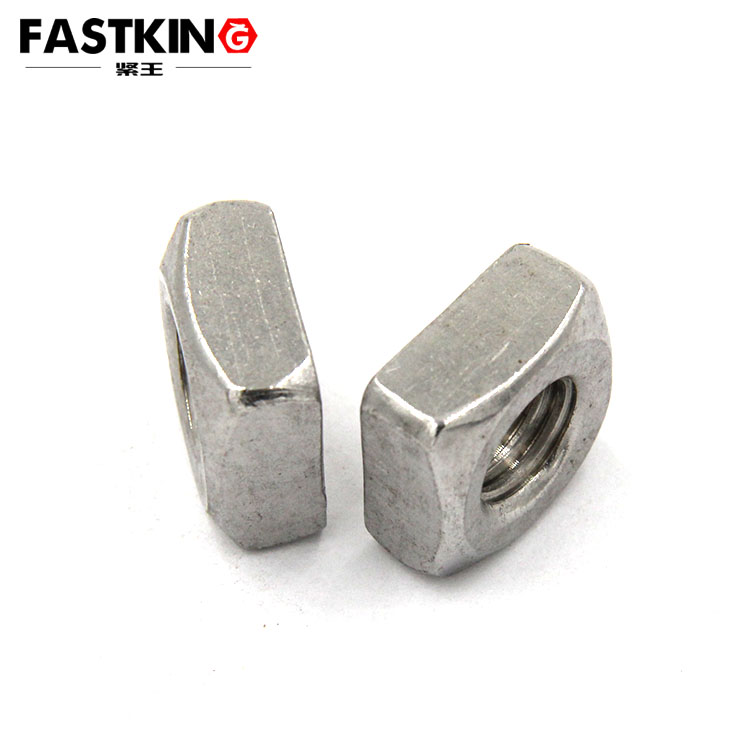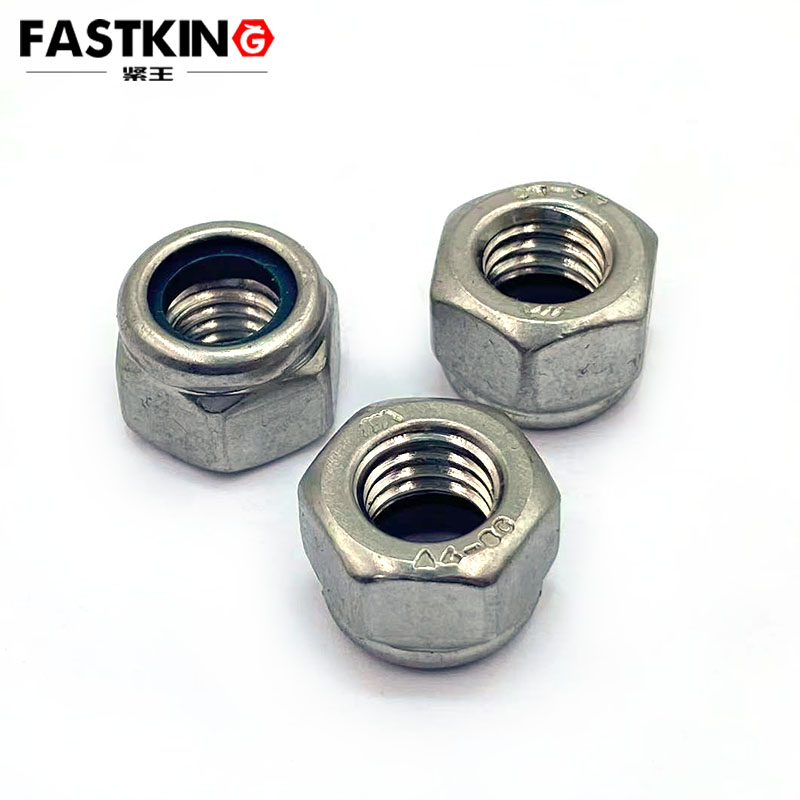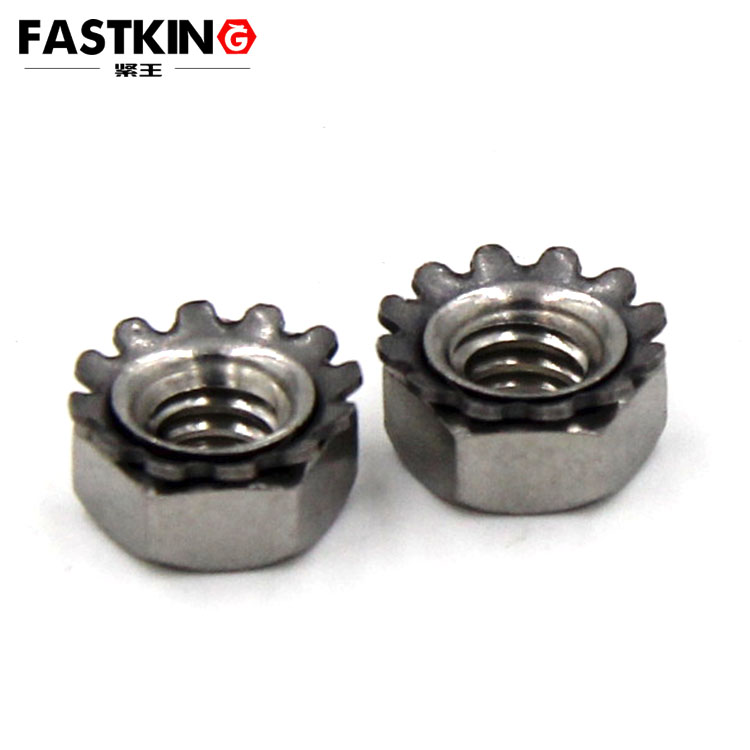- ZHUHAI JIALI HARDWARE CO.,LTD.
- 0760-85889089
Square nut DIN557
- Product description:Square mother, hardware equipment, fastening accessories. It is square in shape with internal thread and can be used with bolt. It is also called square nut,
I. Product Definition & Core Features: Practical Nature Behind the Square Structure A square nut, essentially a "square-shaped fastening component with internal threads", belongs to the category of nut-based hardware products. Its core identification points and functional logic can be broken down into three dimensions:
From the perspective of basic shape, a square nut has a standard square cuboid appearance, with four sides that are flat and perpendicular to each other. The side length varies by specification (e.g., an M8 square nut typically has a side length of 13mm, while an M10 square nut has a side length of approximately 16mm). Internal threads are tapped at the center of the square cuboid, covering thread specifications from M4 to M36. It pairs with bolts of the same specification (e.g., an M6 bolt with an M6 square nut) and achieves tight connection between parts through the engagement of the thread pair. Compared with hexagon nuts, the core difference of square nuts lies in the "number of sides" — the six sides of a hexagon nut allow for multi-angle force application with a wrench, while the four flat sides of a square nut offer greater advantages in "flat-surface mounting and anti-rotation positioning".
In terms of core attributes, square nuts share common characteristics with other nut products: first, "small size" — the height of most square nut specifications ranges from 5mm to 20mm (e.g., an M5 square nut has a height of approximately 8mm), making them suitable for installation scenarios with limited space; second, "flexible specifications" — in addition to standard metric threads, custom specifications such as imperial threads and fine-pitch threads can be made to meet non-standard needs of different industries; third, "high demand" — as basic fastening components, they are low-cost and fast-consuming, widely used in bulk engineering projects and daily home decoration. The annual consumption in the construction industry alone can reach billions of units.
Regarding material and surface treatment, the material selection of square nuts balances cost and working conditions: Q235 carbon steel is commonly used for general scenarios (with galvanized or black oxide surface treatments to enhance rust resistance, suitable for dry indoor environments); 304 stainless steel is selected for humid or slightly corrosive scenarios (e.g., outdoor building materials, transportation facilities), as its chromium-nickel alloy forms a passive film to resist rust; 45# carbon steel is used for high-strength scenarios such as industrial and mining or power sectors (after quenching and tempering, its tensile strength exceeds 600MPa, suitable for fixing heavy-duty equipment). The combination of different materials and surface treatments enables square nuts to cover all scenario needs, from home decoration to industrial applications.

II. Structural Advantages: Scenario Adaptation Logic of the Square Design
The reason square nuts can secure a position in the mainstream market dominated by hexagon nuts lies in the unique advantages brought by their "square structure", which even outperform hexagon nuts in specific scenarios:
1. Stable Fit: Suitable for Flat-Surface Mounting, Reducing Displacement Risks
The four sides of a square nut are flat. When mounted on a smooth surface of a connected part (e.g., flat steel plates in building steel structures, wooden boards in home decoration, or bases of industrial equipment), its four sides can fit tightly with the mounting surface or the flat surfaces of adjacent parts, forming "anti-rotation positioning". For example, in the connection between crossbars and vertical poles of construction scaffolding, after the square nut is tightened, its sides can fit the flat surface of the vertical pole, preventing the nut from rotating on its own due to vibration. In contrast, the rounded transitional sides of hexagon nuts tend to leave small gaps when fitting on flat surfaces, increasing the risk of loosening. This "flat-surface fitting" feature makes square nuts more stable in scenarios where "no additional positioning parts" are available.
2. Balanced Force Distribution: Four-Point Force Application, Compatible with Simple Tools
All four sides of a square nut serve as force-bearing surfaces. During installation, they can be used not only with standard open-end wrenches but also with simple tools such as adjustable wrenches and pipe wrenches. For instance, at a decoration site, if a worker does not have a dedicated hexagon wrench, they can directly use an adjustable wrench to clamp any two opposite sides of the square nut for force application — this convenience far surpasses that of hexagon nuts, which require precise alignment with hexagonal sides. Meanwhile, the symmetrical structure of the four sides ensures balanced force distribution, preventing nut deformation caused by local stress concentration during tightening. This makes square nuts particularly suitable for home decoration scenarios operated by non-professionals (e.g., installing furniture legs or fixing wall-mounted brackets).
3. Controllable Cost: Simplified Processing, Lower Production Threshold
From a manufacturing perspective, the square structure of square nuts is easier to process than hexagon nuts: carbon steel square nuts can be directly pressed into a square cuboid shape via the "cold heading" process, eliminating the need for additional milling of hexagonal sides; internal threads are tapped in one go with a tapping machine, resulting in a 15%-20% higher production efficiency than hexagon nuts. The direct advantage of low processing difficulty is "lower cost" — the unit price of a carbon steel square nut of the same specification is usually 5%-10% lower than that of a hexagon nut. For bulk procurement scenarios such as construction and home decoration, this significantly reduces the overall fastening cost, which is also one of the important reasons for its "high demand".
III. Application Scenarios: Full-Range Coverage from Home Decoration to Industry
The "versatility" of square nuts allows them to penetrate multiple industries. Differences in demand across scenarios are mainly reflected in specifications, materials, and installation methods. Typical applications can be divided into four major fields:
1. Construction and Building Materials Industry: Basic Components for Load-Bearing and Fixing
In construction projects, square nuts are core components for "steel structure connections and scaffolding assembly": for example, in the connection between purlins and main beams of steel-structured workshops, M12 stainless steel square nuts are used with bolts for fixation, and their flat-surface fitting feature ensures purlins do not shift; at the joints of scaffolding crossbars, galvanized carbon steel square nuts can bear the vertical load of crossbars, and the galvanized layer resists rust in humid outdoor environments. In home decoration, square nuts are used to fix wall-mounted accessories (e.g., storage racks, curtain rods) — M6 carbon steel square nuts are embedded in wall 预埋件 (embedded parts), and paired with expansion bolts, their square structure ensures stable force transmission, preventing nuts from rotating due to the gravitational sag of accessories.
2. Industrial, Mining, and Heavy-Duty Equipment: Reliable Choice for High-Strength Fastening
High "strength" is required for square nuts in industrial and mining scenarios: for example, in fixing the conveyor bracket of mining machinery, M20 45# carbon steel square nuts (after quenching and tempering, with a hardness of HRC25-30) are used with high-strength bolts to withstand the impact load of the operating conveyor; in the base installation of heavy-duty machine tools, square nuts fit the flat surface of the machine tool base through their four sides, ensuring the machine tool does not displace during high-speed operation. Their stable force-bearing structure makes them more suitable for long-term fixation of heavy-duty equipment than hexagon nuts.
3. Transportation and Municipal Facilities: Basic Guarantee for Outdoor Weather Resistance
Square nuts in transportation and municipal scenarios need to balance "rust resistance" and "anti-loosening": in the connection between vertical poles and crossbars of highway guardrails, M16 304 stainless steel square nuts are used to resist corrosion from rainwater and road salt, preventing guardrail failure due to nut rust; in fixing the base of municipal street lamps, carbon steel square nuts with Dacromet surface treatment (with a salt spray resistance of over 500 hours) are used to adapt to complex outdoor environments. Meanwhile, their square structure fits the flange of the street lamp base, ensuring the street lamp remains upright and stable.
4. Power and Electrical Industry: Adaptation to Insulation and Safety Needs
Square nuts in the power industry mostly need to adapt to "insulation and anti-conduction" scenarios: for example, in fixing terminal blocks inside power distribution cabinets, square nuts with "carbon steel body + nylon coating" are used — the nylon coating provides insulation, avoiding electric leakage risks caused by direct metal contact; in connecting the bracket of outdoor transformers, 316 stainless steel square nuts resist corrosion from harsh weather, and their square structure facilitates matching with insulation gaskets at the transformer base, balancing fastening and safety.
IV. Selection and Usage: Details Determine Fastening Effect
Although square nuts have a simple structure, details in selection and installation directly affect their performance. The principles of "scenario adaptation and standardized operation" should be followed:
1. Selection: Matching Specifications and Materials to Working Conditions
- Specification Matching: The internal thread specification must fully match the bolt (e.g., an M8 bolt with an M8 square nut) to avoid loose connections caused by excessive thread gaps; meanwhile, the height of the square nut should be selected based on the thickness of the connected part (e.g., if the thickness of the connected part is 10mm, a square nut with a height of ≥8mm should be chosen to ensure sufficient thread engagement depth).
-
Material Selection: For dry indoor scenarios (e.g., furniture installation), galvanized carbon steel square nuts are selected for low cost; for outdoor or humid scenarios (e.g., balcony guardrails), 304 stainless steel square nuts are preferred; for highly corrosive scenarios (e.g., chemical industrial parks, coastal areas), 316 stainless steel square nuts are a must; for high-strength scenarios (e.g., heavy-duty equipment), 45# carbon steel square nuts are used.

2. Installation: Avoiding Operational Mistakes
- Tool Compatibility: Priority should be given to using open-end wrenches (with sizes matching the side length of the square nut, e.g., a 13mm open-end wrench for an M8 square nut with a 13mm side length). Over-clamping with adjustable wrenches should be avoided to prevent deformation of the square nut’s sides.
- Balanced Force Application: During tightening, ensure the wrench fully fits the sides of the square nut to avoid inclined force application (which easily causes thread stripping). It is recommended to use a torque wrench to control the torque (e.g., the recommended torque for an M10 square nut is 20-25N・m).
- Rust Prevention Treatment: For outdoor installation, rubber gaskets can be added between the square nut and the connected part to further block moisture intrusion; if the galvanized layer is found damaged after installation, rust-proof paint should be applied promptly to extend service life.
V. Conclusion: "Great Value" of Basic Components
Square nuts lack the anti-loosening structure of nylon lock nuts and the protective function of cap nuts, yet they remain an "evergreen" product in the hardware fastening field, thanks to their characteristics of "square structure, low cost, and wide adaptability". Their value does not lie in innovative breakthroughs but in "pragmatism" — using the simplest structure to meet the most basic fastening needs and adapting to all scenarios from home decoration to industry. Their "small size and high demand" feature is a testament to the "cornerstone role" of basic hardware components in the industrial chain.
Amid the trend of the fastener industry moving toward "high precision and multi-functionality", square nuts still maintain stable demand. The core lies in their "irreplaceability": in specific scenarios, the fitting performance and force stability of the square structure cannot be replaced by hexagon nuts; meanwhile, the advantages of low cost and easy processing give them an unshakable cost-performance ratio in bulk engineering projects. This design logic of "precisely matching needs" is the fundamental reason why square nuts, as basic hardware components, can remain active in the market for a long time.





